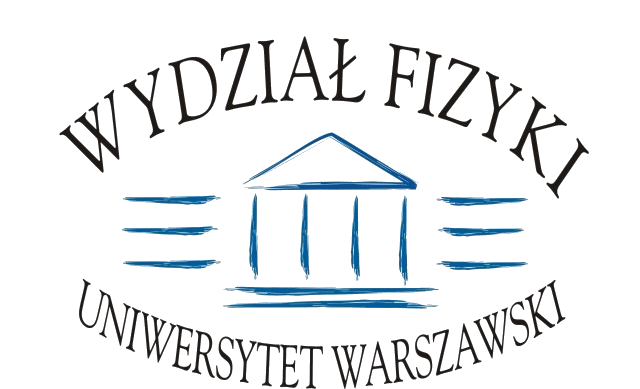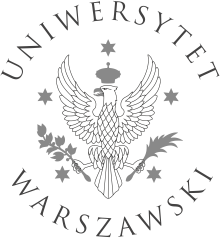Seminarium "Teoria cząstek elementarnych i kosmologia"
2017/2018 | 2018/2019 | 2019/2020 | 2020/2021 | 2021/2022 | 2022/2023 | 2023/2024 | 2024/2025 | 2025/2026
2025-07-01 (Wtorek)
Graham White (Southampton U.)
CP sources in electroweak baryogenesis
The nature of cosmological electroweak symmetry breaking is perhaps the key question future colliders can answer. If the Universe boils when the Higgs gets a vev, then this provides good conditions to produce the observed asymmetry between matter and anti-matter. However, for decades predictions of the amount of asymmetry varies by many orders of magnitude. This means that unless conditions are extremely unfavourable, definitive statements about the status of a particular model of electroweak baryogenesis are impossible. I look at the different methods of calculating the production of baryon asymmetry, trying to derive them from first principles using the Kadanoff-Baym equations. In doing so I show why different methods produce different results and show how to resolve some of the ambiguities. Finally, I present a calculation of the electroweak baryogenesis predicted by a toy model with 2 susy like neutralinos, something that catalyses a first order electroweak phase transition and no other bsm content.
2025-06-17 (Wtorek)
Kuldeep Deka (New York U., Abu Dhabi)
Dark Matter Genesis in the Reheating Era
The post-inflationary reheating era plays a pivotal role in shaping the thermal history of the Universe, yet its dynamics remain poorly understood. In this talk, I will examine how various reheating scenarios impact dark matter (DM) production, encompassing both thermal and nonthermal origins. Using general parametrizations for the Hubble expansion rate and the evolution of the Standard Model temperature, I will present a unified framework to study DM genesis including freeze-out mechanisms (WIMPs, SIMPs, ELDERs, Cannibals) and freeze-in processes (both infrared and ultraviolet regimes). These dynamics can significantly alter the viable DM parameter space, enabling much heavier thermal DM candidates and extending the reach for light feebly interacting particles. I will highlight the interplay between theoretical predictions and experimental constraints, emphasizing how future searches could uncover distinctive imprints of DM production during reheating.
2025-06-05 (Czwartek)
Seminar has been cancelled
2025-05-29 (Czwartek)
Piotr Toczek (IFT UW)
The complicated story of Primordial Black Hole production in cosmological Phase Transitions
Among all the possible candidates for Dark Matter, one appealing example is a population of Primordial Black Holes, which could have been borne by various processes in the early stages of the Universe. In this talk, I will investigate the formation of such objects as the result of the collapse of energy density fluctuations originating from supercooled first-order phase transitions. I will present the results of a simplified approach, where the energy density fluctuations are evolved within the limit of flat FRW Universe. These results let us identify how the parameters of the phase transition, such as temperature and transition speed, influence the spectrum and total population of Primordial Black Holes. Additionally, I will show how energy density fluctuations modify the Gravitational Wave signals as the production of secondary Gravitational Waves is induced. Finally, we will discuss the latest results, where the full covariant formalism of cosmological perturbation is introduced and show how it impacts the production of Primordial Black Holes and Gravitational Waves.
2025-05-22 (Czwartek)
Francesco Costa (Charles University, Prague)
Gravitational Waves as probe of Dark Sectors
The Standard Model (SM) leaves several fundamental questions unanswered. Traditionally, searches for new physics have focused on the TeV scale, but the lack of discoveries has motivated a shift toward exploring sub-GeV dark sectors as more viable extensions of the SM.In this context, the PTA detection of a stochastic gravitational wave background (SGWB) in the nanohertz range offers a new hint for dark sectors. In fact, one compelling explanation for this signal involves a (super)cooled first-order phase transition in a dark sector at energy scales around 100 MeVs.I will show how a spontaneously broken U(1) dark gauge symmetry can generate the observed SGWB signal and the implications for the dark sector masses and couplings. I will also discuss how the different portal couplings to the SM offer a decay possibility for the dark sector to respect the bounds from Neff.
2025-05-15 (Czwartek)
Tom Zlosnik (University of Gdańsk)
Removing spurious degrees of freedom from EFT of gravity
In the effective field theory approach to gravity, the Lagrangian density for general relativity is supplemented by generally covariant terms of higher order in the Riemann tensor and its derivatives. At face value, these terms will result in higher derivative equations of motion and additional degrees of freedom beyond those of general relativity. This is seemingly at odds with the goal of effective field theory which is to encode ultraviolet corrections in terms of existing low energy degrees of freedom. An action-based procedure for the removal of spurious degrees of freedom is considered for the case of general relativity in the presence of such additional terms, resulting in an extension to general relativity that does not introduce new degrees of freedom in the gravitational sector.
2025-05-08 (Czwartek)
Piotr Toczek (IFT UW)
The complicated story of Primordial Black Hole production in cosmological Phase Transitions
Among all the possible candidates for Dark Matter, one appealing example is a population of Primordial Black Holes, which could have been borne by various processes in the early stages of the Universe. In this talk, I will investigate the formation of such objects as the result of the collapse of energy density fluctuations originating from supercooled first-order phase transitions. I will present the results of a simplified approach, where the energy density fluctuations are evolved within the limit of flat FRW Universe. These results let us identify how the parameters of the phase transition, such as temperature and transition speed, influence the spectrum and total population of Primordial Black Holes. Additionally, I will show how energy density fluctuations modify the Gravitational Wave signals as the production of secondary Gravitational Waves is induced. Finally, we will discuss the latest results, where the full covariant formalism of cosmological perturbation is introduced and show how it impacts the production of Primordial Black Holes and Gravitational Waves.
2025-04-24 (Czwartek)
Miguel Vanvlasselaer (Vrije Universiteit Brussel & The International Solvay Institutes)
Bubble wall dynamics from nonequilibrium quantum field theory
In this talk, we derive the coupled dynamics between the bubble wall and the plasma from first principles using nonequilibrium quantum field theory. The commonly used equation of motion of the bubble wall in the kinetic approach is shown to be incomplete. In the language of the two-particle-irreducible effective action, the conventional equation misses higher-loop terms generated by the condensate-particle type vertices (e.g.,~ φϕχ2, where φ is the background field describing the bubble wall, ϕ the corresponding particle excitation and χ another particle species in the plasma). From the missing terms, we identify an additional dissipative friction which is contributed by particle production processes from the condensate-particle type vertices. We also show how other transmission processes beyond the 1-to-1 elementary transmission studied in the literature for ultrarelativistic bubble walls, e.g., 1-to-1 mixing and 1-to-2 transition radiation, can be understood from the kinetic approach.
2025-04-10 (Czwartek)
Mateusz Zych (IFT UW)
Bubble wall velocity from hydrodynamics
Terminal velocity reached by bubble walls in cosmological first-order phase transitions is an important parameter determining both primordial gravitational wave spectrum and the production of baryon asymmetry in models of electroweak baryogenesis. In this talk I discuss the recent results for local thermal equilibrium approximation for which, using hydrodynamic simulations, we have confirmed that pure hydrodynamic backreaction can lead to steady-state expansion. However, this is not the generic outcome. Instead, it is much more common to observe runaways, as the early-stage dynamics right after the nucleation allow the bubble walls to achieve supersonic velocities before the heated fluid shell in front of the bubble is formed. In order to capture this effect, we generalized the analytical methods beyond the local thermal equilibrium and find a qualitative way to predict whether the runaway is physical, which has a crucial impact on cosmological observables.
2025-04-03 (Czwartek)
Björn Garbrecht (TUM)
CP conservation in the strong interactions
We examine possible effects of the topological term in the QCD-Lagrangian. For the path integral in zero-temperature Euclidean space, topological quantization only emerges in the infinite-volume limit, so that it must be taken prior to summing over winding numbers. This procedure is consistent with the construction of the path-integral contour from steepest-descent flows. As a result, CP violation is absent from observables, in contrast to calculations that rely on singular deformations leading to an inequivalent integration contour with the opposite order of limits. We also address theta-vacua in temporal gauge, which in the conventional picture are not properly normalizable, in contradiction with the axioms of quantum mechanics. However, we show that the possible wave-functionals, given the canonical commutation relations and without introducing extra gauge constraints, are properly normalizable states that do not exhibit CP violation.
Stron 1 z 3






